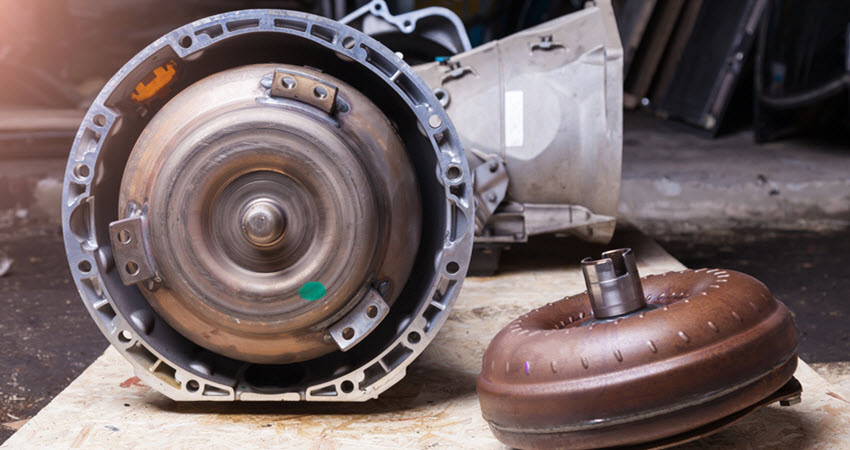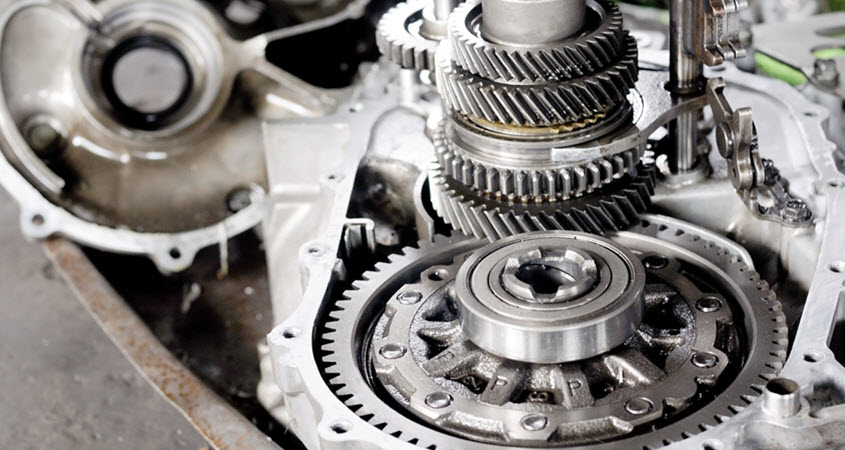The torque converter is a crucial transmission component in the engine, which transfers power output from the engine to the transmission unit through the fluid dynamics of the transmission fluid. The torque converter is a component of automatic transmission vehicles, whereas cars with manual transmissions have a clutch that performs the function of transferring power from the engine to the transmission.
The torque converter consists of components such as the impeller/pump, turbine, and stator. The engine’s power is used in the impeller to move the fluid, which in turn moves the turbine, causing the wheels to move through the transmission. This mechanism also enables the torque converter to idle the Land Rover when it is in gear and smoothly transfers multiple powers.
Causes Behind a Faulty Torque Converter and Transmission Vibrations
- Overheating of the transmission fluid is the most common cause of failure of the torque converter in Land Rover vehicles. Aggressive driving, towing heavy loads, or an overheated engine can cause the transmission fluid to overheat. High-temperature transmission fluid causes accelerated wear and corrosion in the internal components of the converter.
- Transmission fluid contaminated with dirt, debris, and microscopic metal shavings acts like sandpaper, causing wear and corrosion within the torque converter’s internal components, including delicate bearings, seals, and clutch surfaces.
- Torque converter components, such as the impeller, turbine, and stator, move on top of needle-like bearings. Due to age-induced wear or physical damage, one or more bearings may break apart from their original position and become disintegrated, releasing small metal particles throughout the components. Depending upon the size of the metal shard, these could cause minor corrosion or severe physical damage in the torque converter.
- The seals in the torque converter, due to age, degrade and become prone to leaks. The leaks cause a loss of transmission fluid and fluid pressure, leading to gear slipping, transmission overheating, and eventual transmission failure.
As a result of a malfunction in the torque converter, the Land Rover transmission exhibits various malfunctions. Among them, the most prominent one is transmission vibration, which comes in many types and is accompanied by additional issues. Due to damage and wear on the clutch surface, it cannot engage properly and creates a ‘rumble strip’ shuddering. Due to internal mechanical damage, the transmission produces a vibration that increases in intensity as the speed increases.
How to Stop Transmission Vibrations Due to a Faulty Torque Converter
To repair the torque converter and stop the transmission vibration, our technicians at Kruse Lucas Imports first conduct a diagnostic inspection on the vehicle. The first step in the diagnosis is a test drive, during which the expert technician observes the vibrations exhibited by the car. Then, the transmission fluid is extracted and analyzed for its smell, color, condition, and presence of contaminants. Finally, after all the physical inspection, a diagnostic scan is done on the Land Rover to retrieve transmission error codes.
Depending upon the diagnosis, the repair for a faulty torque converter can range from minor services to a major system overhaul.
- If the vibration is minor and only the transmission fluid condition is degraded, then a fluid flush is the solution. The old and degraded transmission fluid is completely drained from the system, and new, high-quality, and brand-approved transmission fluid is filled in the Land Rover, restoring its transmission capacity.
- If the error codes indicate a malfunction in the TCC solenoid, then the damaged solenoid is replaced with a new OEM-made solenoid. This process involves removing the transmission pan and is more invasive than the fluid service.
- If the fluid is heavily contaminated, the vibration is severe, and there is evidence of severe internal damage, the torque converter is completely replaced with a new one. This involves removing the transmission unit. While the transmission is removed, also change the front pump seal, and inspect the condition of transmission components. Always use OEM-made parts and components when you go for Land Rover repair or service, for optimal and compatible performance.

Fixing Your Land Rover Transmission at Kruse Lucas Import near Modesto
Since 1983, Kruse Lucas Import has operated as an independent auto repair shop specializing in European auto models in Modesto, California. The facility features factory-grade tools and modern diagnostic equipment, ensuring precise and accurate repairs for your Land Rover. Our ASE-certified technicians are experts in addressing issues such as a faulty torque converter in vehicles like the Land Rover. We always use genuine parts and high-quality fluid for all our repairs and services. Operating at 525 Tully Road, Modesto, we also provide reliable and affordable service to the residents of surrounding cities, including Manteca, Oakdale, Ripon, and Turlock.
 525 Tully Road
525 Tully Road 209-214-7831
209-214-7831



